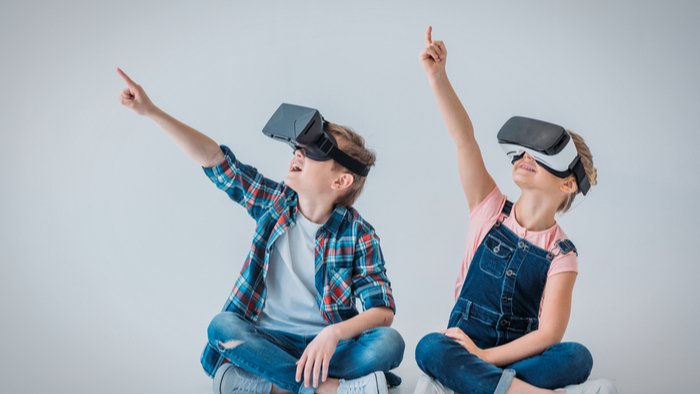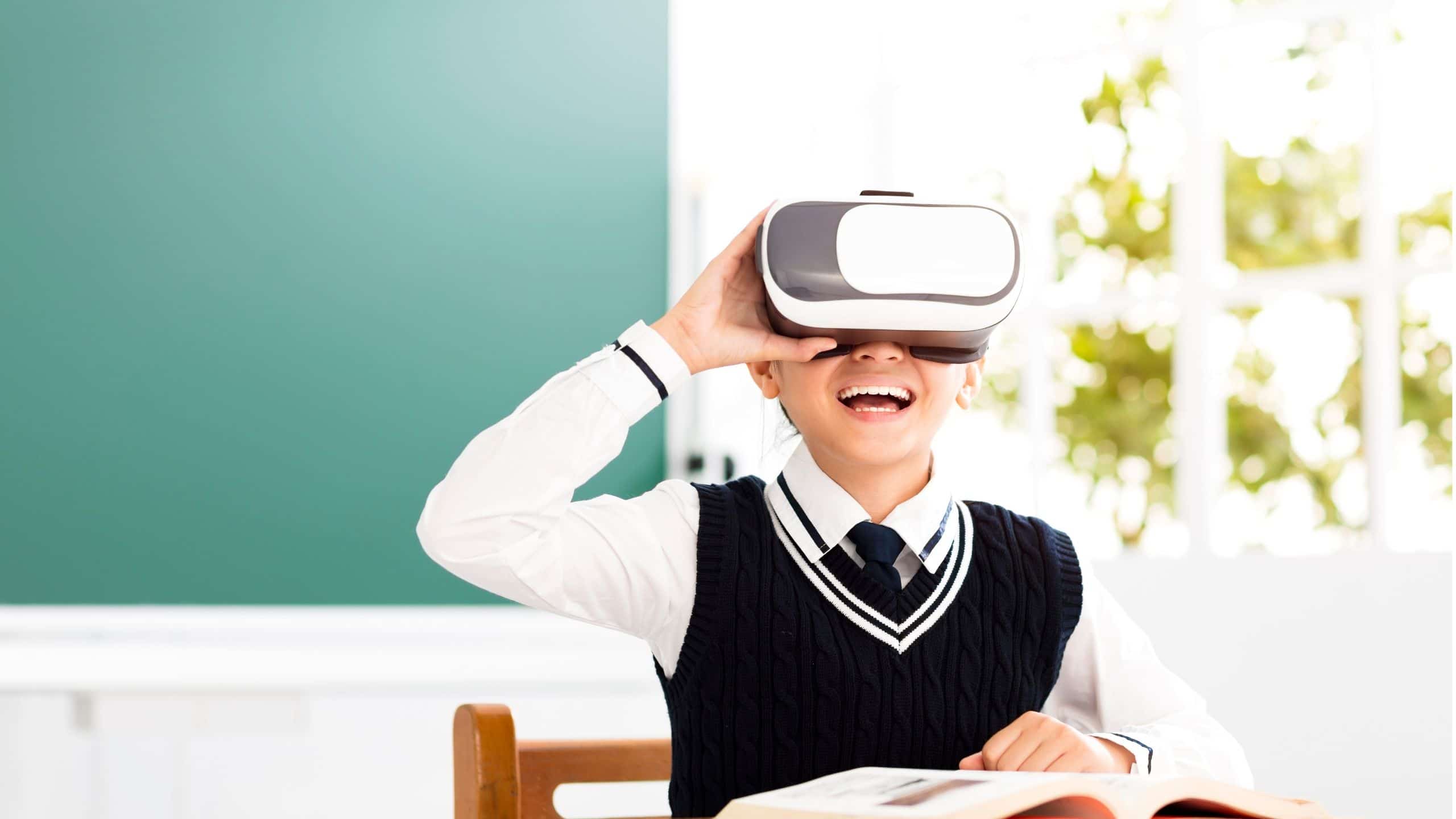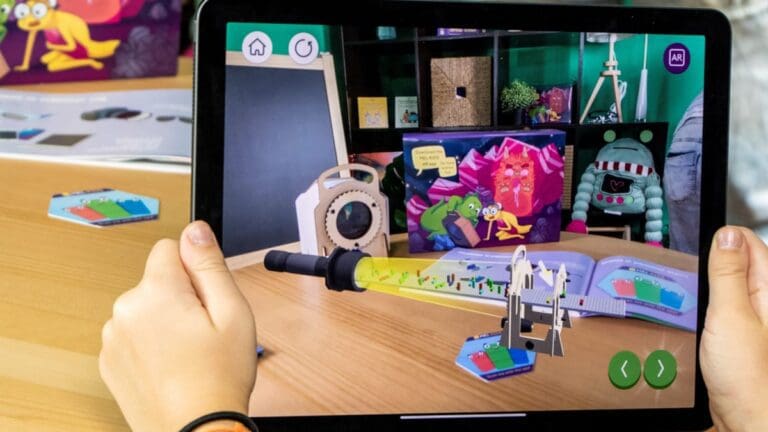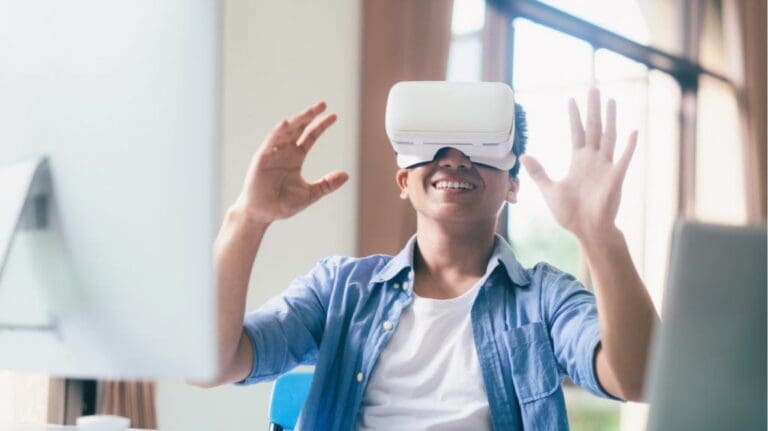VR Headsets and VR Games for Kids: Parent’s Guide
Virtual reality (VR) has become increasingly popular, providing immersive experiences that can transport you to new worlds and offer interactive gameplay. As a parent, you may wonder if VR headsets and games are appropriate for your children and how to choose the best options for their age and interests.
Before introducing it to your kids, it is essential to understand the benefits, risks, and safety guidelines associated with VR gaming. This guide will help you navigate the world of VR by providing tips on selecting suitable VR Headsets and VR Games for Kids, understanding age restrictions, and ensuring that your child’s virtual experiences are fun and safe.
Understanding Virtual Reality for Kids
As a parent, it’s important to be informed about virtual reality (VR) technology and how it may impact your children’s lives. In this section, we’ll dive into what VR is, its benefits and potential risks for kids, and some of the various ways it can be used.
What is Virtual Reality?
Virtual reality is a computer-generated digital 3D environment where users can interact with virtual surroundings and objects. When your child puts on a VR headset, they no longer see the physical real world. Instead, they are transported into the body of a virtual character (who they control) in a virtual world.
Benefits of VR for Children
There are several potential benefits of using VR as a tool for children’s education and entertainment. These benefits include:
- Immersive Learning Experiences: VR provides an engaging and interactive way for kids to learn new concepts or skills, from exploring the ocean floor to conducting chemistry experiments in a virtual lab.
- Enhanced Creativity: Virtual reality can inspire children’s imaginations as they immerse themselves in limitless worlds and environments.
- Improved Problem-Solving Skills: Many VR games and activities encourage kids to think critically and solve puzzles or challenges, helping to develop their problem-solving abilities.
From an educational standpoint, VR technology can potentially transform how children learn and engage with digital content.
Potential Risks and Concerns
As with any technology, some potential risks and concerns are associated with kids and VR headsets. These include:
- Physical Safety: VR play spaces should be free from clutter and obstacles, and kids should be supervised using a headset to avoid accidental injuries. Manufacturers recommend an open area of at least 6.5′ x 6.5′ away from doorways, walls, and staircases.
- Age Restrictions: Most VR headset manufacturers suggest a minimum age requirement for use, often around 12 years old, due to concerns about the developing vision of younger children. Always check the age guidelines before allowing your child to use a VR headset.
- Content Appropriateness: Ensure the VR content your child engages with is age-appropriate and suitable based on your family’s values and priorities.
Keeping these risks in mind and setting appropriate boundaries can help ensure a safe and enjoyable virtual reality experience for your child.

Choosing the Right VR Headset for Your Child
Popular VR Headsets for Kids
When choosing a VR headset for your child, it’s essential to consider the variety of available options. Some popular VR headsets for kids include:
- Meta Quest 2: An all-in-one VR headset with access to more than 350 titles, unique experiences (including live events), and no need for a PC or console.
- PlayStation VR (PSVR): A virtual reality headset designed for use with the PlayStation 4 gaming console.
- Nintendo Switch VR: A VR headset compatible with the Nintendo Switch console, providing kid-friendly gaming experiences.
- Google Cardboard: An affordable option for exploring basic virtual reality experiences using most smartphones.
Factors to Consider When Selecting a Headset
There are several factors you should consider when selecting the right VR headset for your child:
- Comfort: Pick a headset with adjustable features, such as a manual interpupillary distance (IPD) adjustment. The Oculus Quest can be set to a low IPD of 58mm, making it a good option for children. Adjust the headset’s fit so your child feels comfortable wearing it.
- Content: Review the titles and experiences available for each headset, and choose one with a library that matches your child’s interests and age-appropriate content.
- Play space: To ensure safety during VR play sessions, children should have access to an open area of at least 6.5′ x 6.5′ free from furniture or clutter. Ideally, this space should also avoid doorways, walls, and staircases.
- Price: Consider your budget when purchasing a VR headset. Options like Google Cardboard provide a more affordable entry into virtual reality, while headsets like Meta Quest 2, PSVR, and Nintendo Switch VR are higher-priced with more advanced features.
- Compatibility: Ensure the VR headset is compatible with your existing gaming console or PC (if required). For example, the PlayStation VR is designed to work with the PlayStation 4 gaming console, and Oculus Rift requires a high-performance PC to function.
By considering these factors and the options available, you can select the most appropriate VR headset for your child, providing them with a fun and engaging experience while ensuring their safety.
Top VR Games and Experiences for Kids
Best VR Games for Different Age Groups
You may wonder which VR games are appropriate for kids of different ages. Here is a list of suitable VR games catering to varying interests and age levels:
- Beat Saber: A great VR game for kids 12 and up and the whole family, Beat Saber offers an exercise-focused rhythm game that involves slicing blocks to the beat of the music.
- Candy Kingdom VR: An enjoyable and accessible on-rail shooter for younger children, this game offers a friendly atmosphere without the frightening elements of many other shooter games.
- Google Earth VR: Perfect for kids of all ages, this immersive experience lets users explore Earth using stunning satellite imagery and 3D mapping. Children can learn about different geographical locations while rope-walking between skyscrapers or diving deep beneath the ocean’s surface.
Educational VR Experiences
Beyond entertainment, VR can also provide kids with valuable educational experiences:
- The Stanford Ocean Acidification Experience: Created by Stanford University, this interactive experience teaches kids about ocean acidification and its impact on marine life. The educational content is presented through a blend of gaming elements, high-quality visuals, and engrossing storytelling.
- The World of Charles Dickens: Transporting users back in time, this immersive VR experience allows children to explore and learn about the life and works of Charles Dickens. Featuring interactive environments filled with character profiles and excerpts from Dickens’ novels, children can gain an understanding of 19th-century Victorian life as well as the context of his famous works.
- Unity and VR Workshops: For teens interested in learning about VR game development, Unity offers workshops and tutorials on creating their own VR experiences. By engaging in these workshops, kids can learn crucial game design and programming skills, which can lead to future career opportunities in the burgeoning VR industry.
Remember, when selecting VR games or experiences for your children, ensuring the content is age-appropriate and encourages a healthy balance between education and entertainment is essential.
Ensuring Your Child’s Safety and Privacy in Virtual Reality
As a parent, ensuring your child has a safe and enjoyable experience with virtual reality (VR) headsets and games is crucial. This section will discuss essential safety and privacy measures to help protect your child while they explore the digital world.
Parental Controls and Supervision
Use built-in parental controls provided by VR headset manufacturers and game developers. These controls can help limit gameplay time, restrict access to certain content, and monitor your child’s activity. In addition, be present while your child uses the headset to provide guidance and ensure they’re not engaging with inappropriate content or activities.
Have a second person act as a spotter to ensure your child doesn’t collide with furniture, walls, or other objects while immersed in VR. This can help prevent accidents and injuries.
Health Effects and Moderation
While VR can offer various benefits, it’s essential to be aware of any potential negative effects it might have on your child’s health. Excessive use of VR could lead to eye strain, dizziness, or discomfort. Keep sessions short, especially when your child is first starting, and monitor their reactions to see if any adverse effects arise.
Encourage your child to take regular breaks and promote a balanced approach to screen time, including outdoor play and other activities.
Age Ratings and Privacy Concerns
Ensure your child’s privacy and safety by adhering to age restrictions set by headset manufacturers and app developers. For privacy and safety reasons, many VR devices and applications require users to be 13 years old or older. Always read the age ratings for hardware and software, and do not allow children under the suggested age to have their own accounts or devices.
Become familiar with the privacy policies of VR applications and platforms to understand how your child’s personal information is being handled. Educate your child about the importance of protecting their privacy and suggest guidelines about sharing personal information in the virtual world.
Creating a Positive VR Experience for Your Child
Communication and Support in VR
Virtual reality offers your child a unique and immersive experience, but it’s important to maintain open lines of communication and support during their time in the virtual world. Ensure they are comfortable and well-adjusted to their VR device by talking them through the setup process and helping them with the correct headset fit.
While your child is using their VR headset, remaining engaged and attentive to their experience is essential. Encourage them to share their thoughts, feelings, and concerns during their virtual adventures. This fosters a sense of security and trust and helps you monitor their well-being during VR sessions. Don’t forget to use headphones to better immerse your child in the experience while still maintaining a connection with them through communication.
Setting Time Limits and Boundaries
Establishing time limits and boundaries is crucial in helping your child achieve a balanced and healthy relationship with their VR experiences. Experts from the Virtual Human Interaction Lab recommend short sessions and frequent breaks, especially for younger users. You can also monitor your child’s playtime and remind them to take breaks during their VR sessions.
It’s important to set up a dedicated play space for your child’s VR experiences, with a recommended area of at least 6.5′ x 6.5′ that’s free from furniture or clutter. This ensures their safety by reducing the risks of tripping or bumping into objects during gameplay.
Regarding content, use the built-in parental controls available on most VR devices. These controls help filter age-appropriate games and experiences and limit interactions with strangers in the virtual world (Common Sense Media). You can foster a safe and enjoyable VR experience for your child by setting clear boundaries and guidelines.







